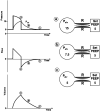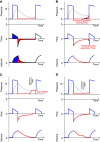How I Teach Auto-PEEP: Applying the Physiology of Expiration
- PMID: 36726712
- PMCID: PMC9886194
- DOI: 10.34197/ats-scholar.2022-0024HT
How I Teach Auto-PEEP: Applying the Physiology of Expiration
Abstract
Teaching complex topics in mechanical ventilation can prove challenging for clinical educators, both at the bedside and in the classroom setting. Some of these topics, such as the topic of auto-positive end-expiratory pressure (auto-PEEP), consist of complicated physiological principles that can be difficult to convey in an organized and intuitive manner. In this entry of "How I Teach," we provide an approach to teaching the concept of auto-PEEP to senior residents and fellows working in the intensive care unit. We offer a framework for educators to effectively present the concepts of auto-PEEP to learners, either at the bedside or in the classroom setting, by summarizing key concepts and including concrete examples of the educational techniques we use. This framework includes specific content we emphasize, how to present this content using a variety of educational resources, assessing learner understanding, and how to modify the topic on the basis of location, time, or resource constraints.
Keywords: How I Teach; auto-PEEP; mechanical ventilation; medical education; physiology.
Copyright © 2022 by the American Thoracic Society.
Figures




Comment in
References
-
- Laghi F, Goyal A. Auto-PEEP in respiratory failure. Minerva Anestesiol . 2012;78:201–221. - PubMed
-
- Nieman GF, Paskanik AM, Bredenberg CE. Effect of positive end-expiratory pressure on alveolar capillary perfusion. J Thorac Cardiovasc Surg . 1988;95:712–716. - PubMed
-
- Maximous S, Acho M, Lee B.2022. https://www.thoracic.org/professionals/clinical-resources/video-lecture-...
-
- Guttmann J, Eberhard L, Fabry B, Bertschmann W, Zeravik J, Adolph M, et al. Time constant/volume relationship of passive expiration in mechanically ventilated ARDS patients. Eur Respir J . 1995;8:114–120. - PubMed
LinkOut - more resources
Full Text Sources

